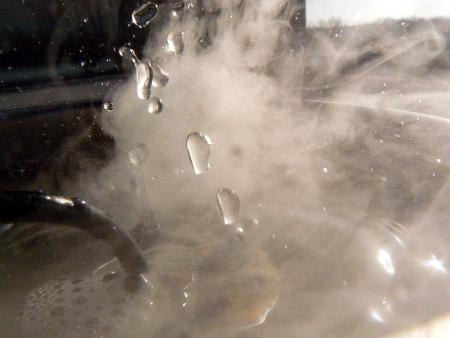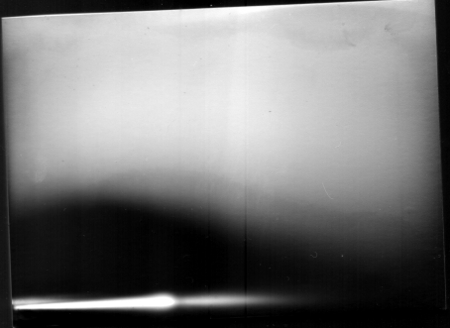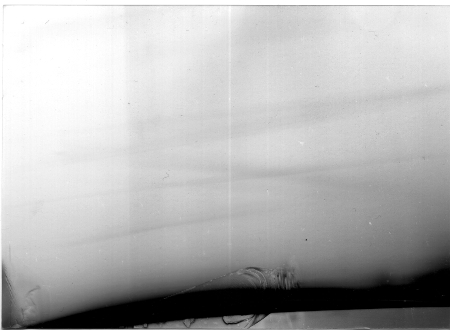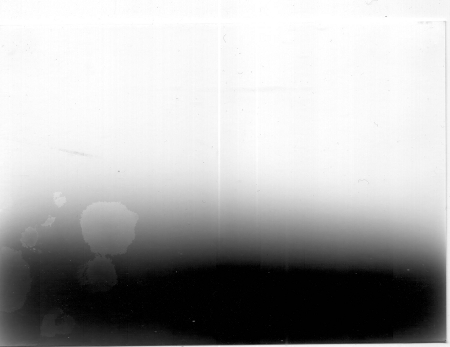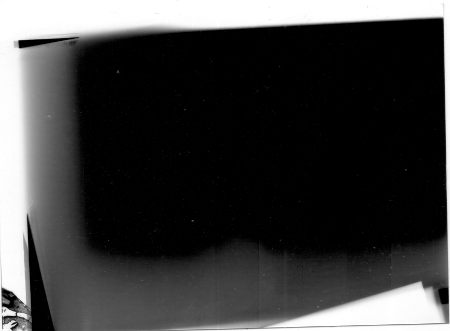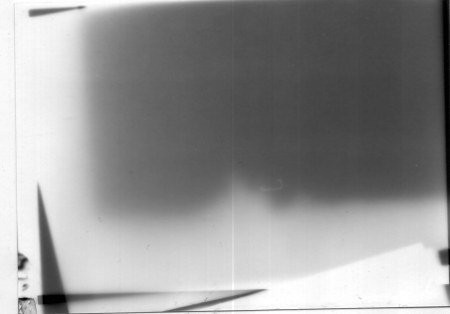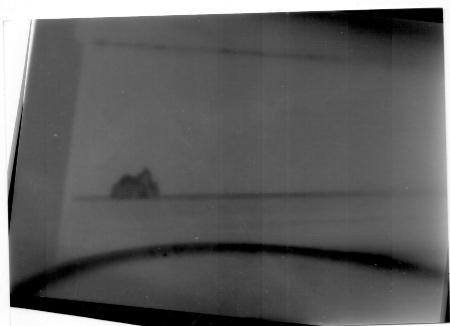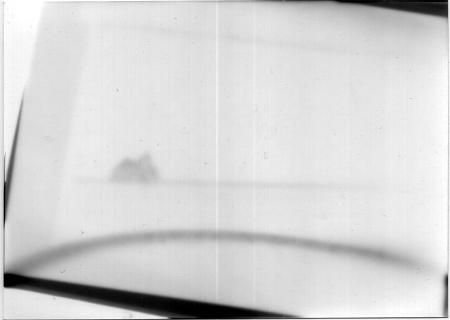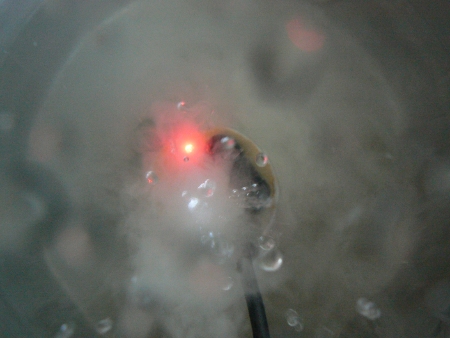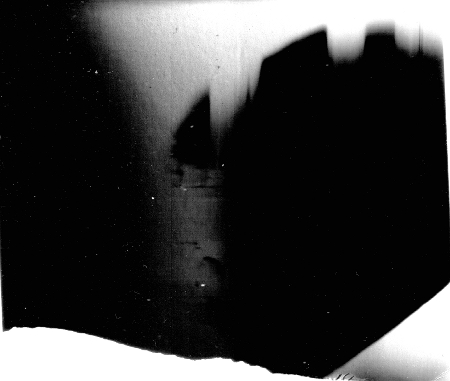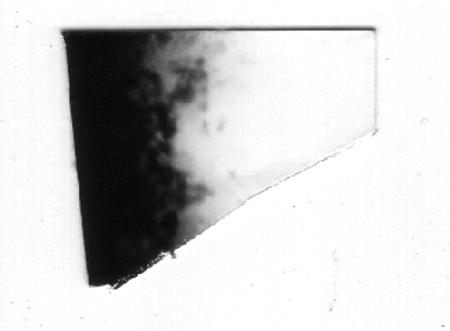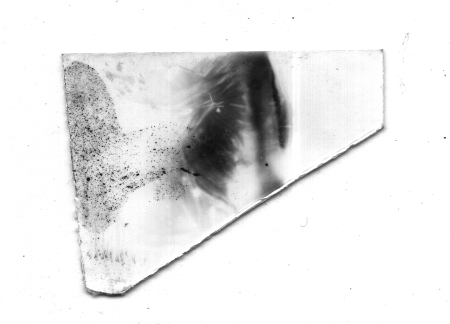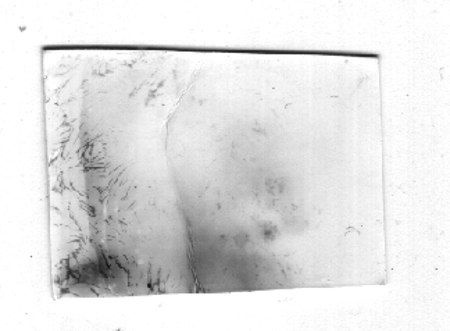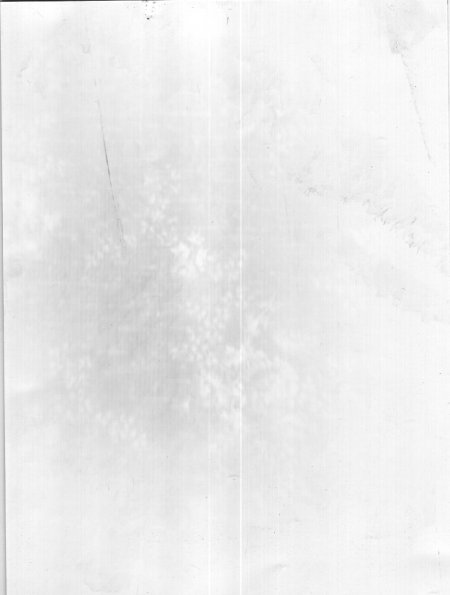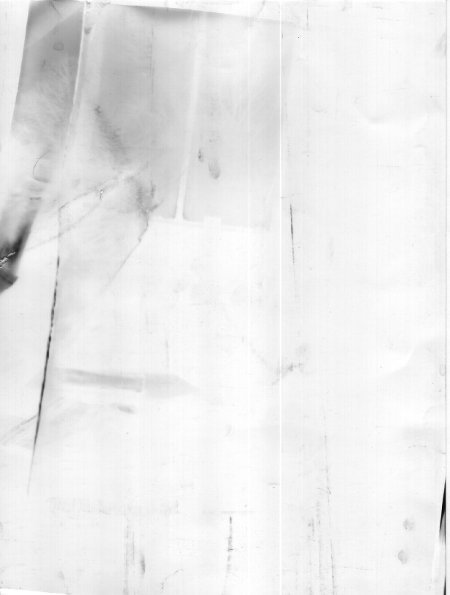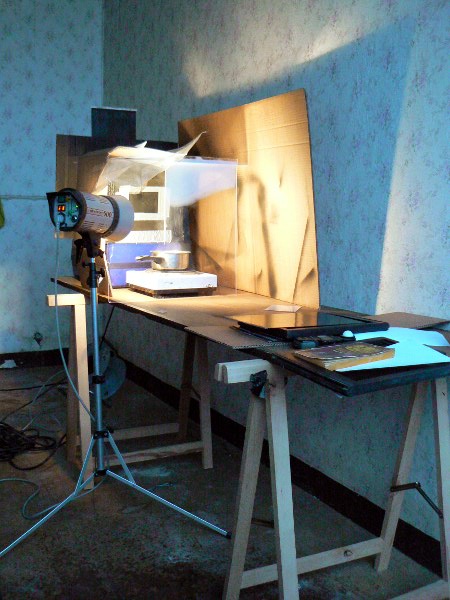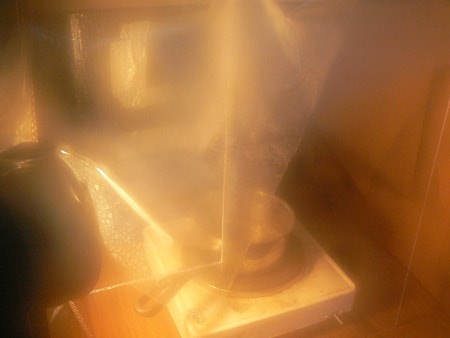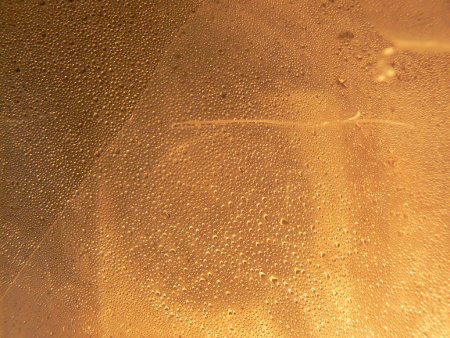Another series of experiments using the little water mister. With an exposure time of 1 hour focusing the ever ascending mist into the sunlight, several layers of photographic paper ( I mounted 2 x 4 sheets on top of each other at the back of the pinhole camera), revealed after processing the imagery below.
Category Archives: Od
The Fog
In my latest series of experiments to reveal the odic negative I used a tiny fog machine or rather a water mister. Through a continuously ascending and descending layer of fog the environment got caught slowly by a medium sized pinhole camera, loaded with photographic paper.
The scanned result of the 30 minutes long odic exposure leaves me with a strange sensation of an infamous 19th century fairytale castle somewhere in the south of germany..
Freeze Me!
During an exciting week of the infamous Crystal World Open Laboratory hosted by CTM at Kunstraum Kreuzberg/Bethanien Katier got invited and inspired to join in with a new series of experiments.
Several 35mm film roll containers were easily converted to pinhole cameras, loaded with a tiny snippet of photographic paper, and finally injected – through the help of several syringes and lots of patience – with differently contaminated liquids that I found in the huge repertoire of chemicals and experiments of the Laboratory.
Deep-frozen over night, the tiny cameras exposed their glacial contents through the spot light of a traditional photographic enlarger for about 10 minutes.
Alum Mordant
Water, contaminated with cpu’s
Ferrous sulphate
Condensation Experiments: First Odic Fingerprints
Below are the first two subtle fingerprints (at least without any uninvited guests!) of todays 45 minutes condensation experiments described in an earlier post. The first airy exposure faces towards the wall, the second the window front.
The Odic Fingerprint – Condensation
The first series of experiments concerned with the revelation of the odic fingerprint uses water condensation. The set up still needs to be refined though, but below you can get a rough insight of the experimental situation: Pinhole Camera, studio light, cooking ring, water, a pan and a very provisional see-through condensation enclosure.
While condensation slowly fills the air with its tiny water drops, emphasized through the studio lighting, the camera captures with an exposure of 45 minutes (still too little time, as the subtle result has shown) the odic fingerprint of the atmosphere.

